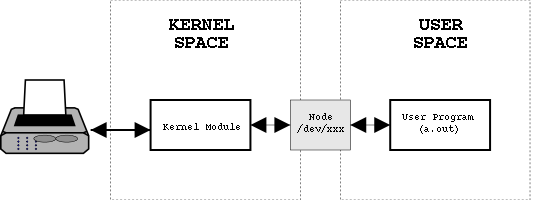Introduction To Linux Kernel Modules And How To Manage Them

The Linux kernel is the core of the operating system, and it is responsible for managing the hardware and software resources of the system. Kernel modules are pieces of code that can be loaded into the kernel to add new functionality or to fix bugs.

Executive Summary

This article provides a comprehensive overview of Linux kernel modules, including their benefits, how to create and manage them, and how to troubleshoot problems with them.
Introduction
Linux kernel modules are a powerful tool that can be used to extend the functionality of the kernel. They can be used to add new hardware support, to implement new file systems, or to improve the performance of the kernel.
Benefits of Using Kernel Modules
There are several benefits to using kernel modules:
- They can be used to add new functionality to the kernel without having to recompile the entire kernel.
- They can be used to fix bugs in the kernel without having to wait for a new kernel release.
- They can be used to improve the performance of the kernel by offloading certain tasks to hardware or by implementing more efficient algorithms.
How to Create a Kernel Module
Creating a kernel module is a relatively simple process. The first step is to create a new file, typically with a .c or .ko extension. The next step is to write the code for the module. The code for a kernel module is similar to the code for a regular C program, but there are some important differences. The most important difference is that kernel modules must be written in a way that is compatible with the kernel.
Once you have written the code for the module, you need to compile it. The following command can be used to compile a kernel module:
make -C /lib/modules/$(uname -r)/build M=$(PWD) modulesOnce the module has been compiled, you can load it into the kernel using the following command:
insmod /path/to/module.koHow to Manage Kernel Modules
Once a kernel module has been loaded, you can manage it using the following commands:
lsmod: This command lists all of the currently loaded kernel modules.modinfo: This command displays information about a specific kernel module.rmmod: This command removes a kernel module from the kernel.
Troubleshooting Kernel Module Problems
If you are having problems with a kernel module, you can use the following steps to troubleshoot the problem:
- Check the kernel log (
dmesg) for any error messages. - Use the
modinfocommand to display information about the module. - Use the
kprobeutility to debug the module.
Conclusion
Kernel modules are a powerful tool that can be used to extend the functionality of the Linux kernel. They can be used to add new hardware support, to implement new file systems, or to improve the performance of the kernel.
Keyword Phrase Tags
- Linux kernel modules
- Kernel module management
- Kernel module troubleshooting
- Kernel module development
- Kernel module performance

Kernel modules are so confusing. I can never figure out how to get them to work.
Kernel modules are not that hard to manage. Once you understand the basics, you can use them to do a lot of cool things.
I’m not sure what kernel modules are, but they sound interesting. Can you tell me more?
I don’t see the point of kernel modules. Why would I want to add more code to my kernel?
Kernel modules? More like kernel booby traps!
Oh, you want to manage kernel modules? Good luck with that. You’ll need it.
What’s the difference between a kernel module and a bad joke? They both crash the system!
Kernel modules are like Linux Lego blocks. You can use them to build anything you want.
I loaded a module and now my system is acting weird. How do I fix it?
If you’re having problems with a kernel module, try unloading it and reloading it.
I think kernel modules are a waste of time. The kernel should be able to do everything it needs to do on its own.
I love kernel modules. They’re the perfect way to break your system.
Oh, you want to manage kernel modules? That’s like trying to defuse a bomb with your bare hands.
What do you call a kernel module that doesn’t work? A kernel boo-boo!
Kernel modules are a powerful tool, but they can be tricky to manage. If you’re not sure what you’re doing, it’s best to leave them alone.